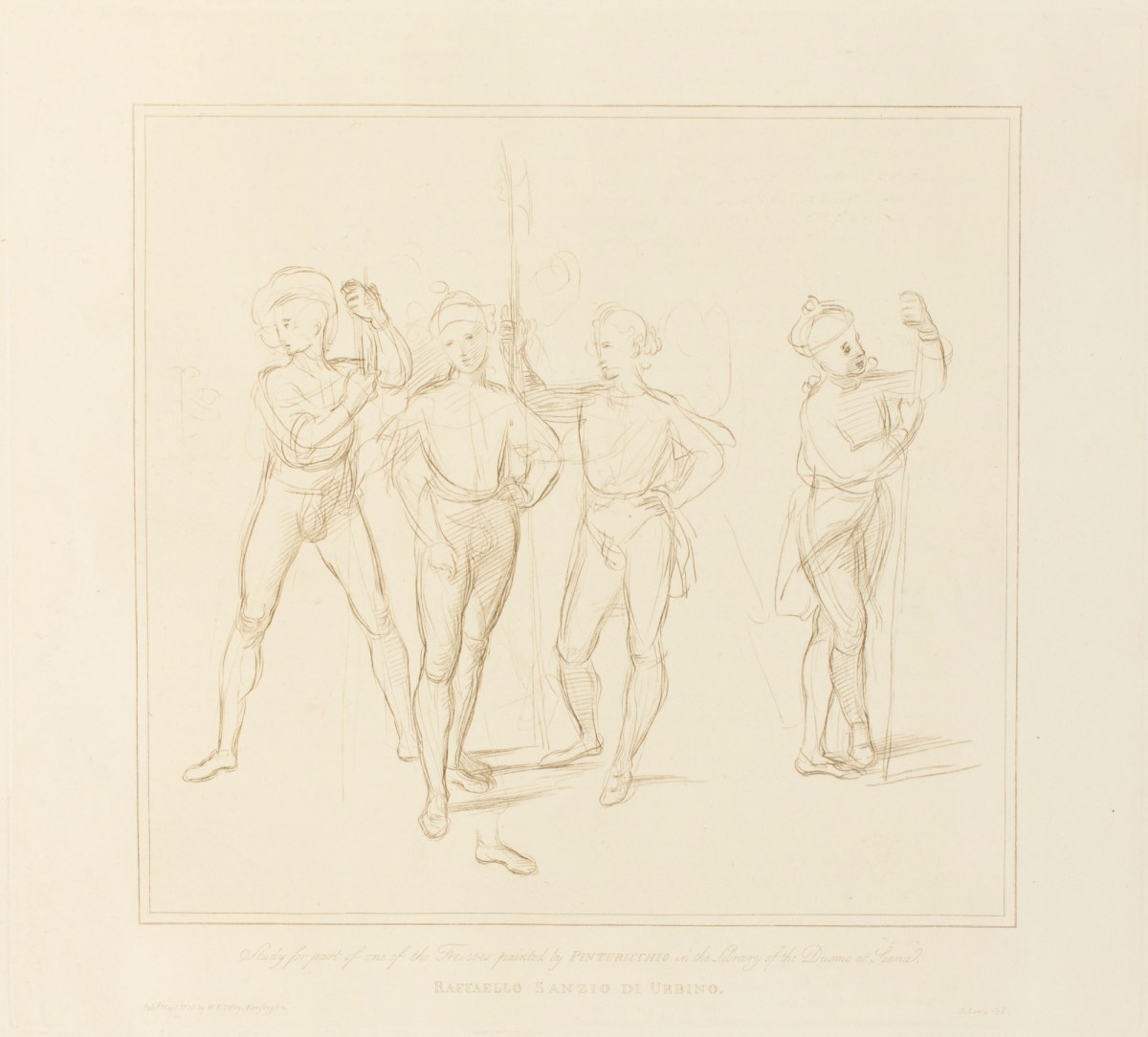
George Robert Lewis, 'Study for pat of one of the frescoses painted by PINTURICCHIO in the Library of the Duomo di Siena ' after a drawing attributed to Raffaello Sanzio, 1823.
Etching and aquatint in colour on j. whatman wove paper. 276 mm x 307 mm. © Photo: Royal Academy of Arts, London.
This image is not available to download. To licence this image for commercial purposes, contact our Picture Library at picturelibrary@royalacademy.org.uk
'Study for pat of one of the frescoses painted by PINTURICCHIO in the Library of the Duomo di Siena ' after a drawing attributed to Raffaello Sanzio, 1823
George Robert Lewis (1782 - 1871)
RA Collection: Art
The Italian school of Design is a collection of facsimile reproductions of eighty-four drawings engraved from the original drawings owned by the amateur artist and collector William Young Ottley (1771-1836).
After his studies at the Royal Academy of Art, William Y. Ottley travelled to Italy where he over the years he amassed a matchless collection of Renaissance drawings. On his return he started to developed his ambitious plan As described in the 'Preface', he intended to publish 'a chronological sequence of the designs of the most eminent artists of Italy', recording not only the rise of Italian art from Cimabue to Michelangelo, but also its decline. The work, commencing in 1808 or 1809, was originally issued in parts, but only in 1823, all the three parts were gathered and reissued as a single volume. The original plan was eventually not brought to completion having included works of artists such Claude Lorraine, and Nicholas Poussin. However his approach to the art history was truly visionary with unmatched artistic and historical vision. Ottley's interest in the still-unfashionable early Renaissance artist (the then called, 'Primitives') would have played an essential role in inspiring the Pre-Raphaelite. It is also believed that while in Italy Ottley made friends at Rome with John Flaxman who certainly had a part in focusing the younger man's taste and his pioneering appreciation for early Italian art.
The volume is also notable not just for its critical insight, but for the excellent execution of the plates. The team of engravers employed a vast variety of specialist intaglio techniques. Ranging from aquatint to stipple engraving, soft ground etching, black chalk manner, red chalk manner, and crayon manner, these technique responded to the media and the style of each drawing. This made 'one of the most sumptuous books on the fine arts ever produced’.
During the long gestation of the Italian School of Design, Ottley found a further outlet for his ever-developing connoisseurship in the study of early Italian prints. These efforts resulted in another seminal publication An Inquiry into the Origin and Early History of Engraving on Copper and Wood (1816). Later on Ottley reverted to a new project, the Series of Plates of the Florentine school, a collection of reproductions of the major works - frescos and sculptures - of the early Renaissance in Florence. The volume was published in 1826 and dedicated to his friend John Flaxman.
Object details
276 mm x 307 mm
The Italian School Of Design: Being A Series Of Fac-Similes Of Original Drawings, By The Most Eminent Painters And Sculptors Of Italy; With Biographical Notices Of The Artists, And Observations On Their Works. By William Young Ottley. - London:: 1823.
Start exploring the RA Collection
- Explore art works, paint-smeared palettes, scribbled letters and more...
- Artists and architects have run the RA for 250 years.
Our Collection is a record of them.



